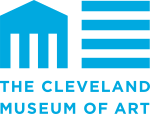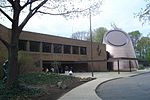Maltz Performing Arts Center

Milton and Tamar Maltz Performing Arts Center at Temple–Tifereth Israel is a 1200-seat historic arts and religious venue on the campus of Case Western Reserve University located on the Hough and University Circle border at Silver Park in Cleveland, Ohio.The converted synagogue serves as the main performance venue of the Case Western Reserve music department and holds campus special events. Silver Hall is still used by the local Jewish congregation for yearly religious and special events. In 2021, a Phase 2 construction project was completed, which added additional performing arts spaces to the Temple. Phase 2 consists of two theaters, scenic and costume shops, classrooms, storage, and the offices of the CWRU Department of Theater, which manages operations of the additional space.
Excerpt from the Wikipedia article Maltz Performing Arts Center (License: CC BY-SA 3.0, Authors, Images).Maltz Performing Arts Center
East 105th Street, Cleveland
Geographical coordinates (GPS) Address Nearby Places Show on map
Geographical coordinates (GPS)
| Latitude | Longitude |
|---|---|
| N 41.508055555556 ° | E -81.616111111111 ° |
Address
Kelvin and Eleanor Smith Foundation Plaza
East 105th Street
44106 Cleveland
Ohio, United States
Open on Google Maps








